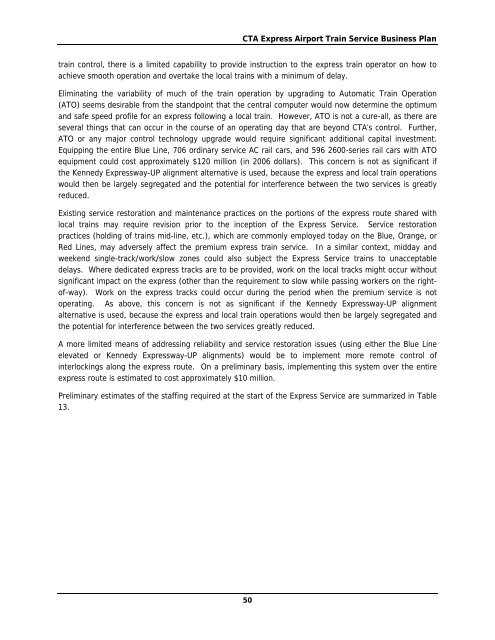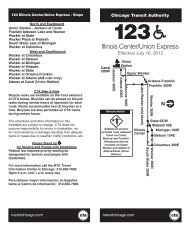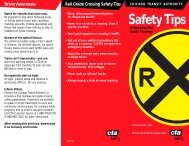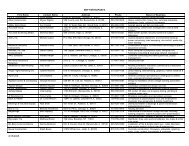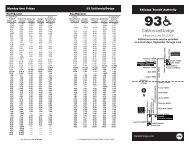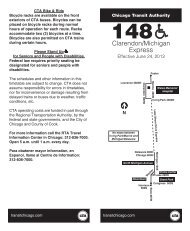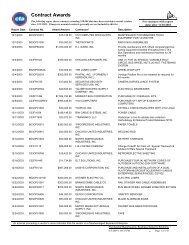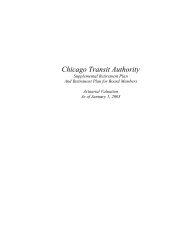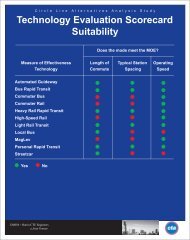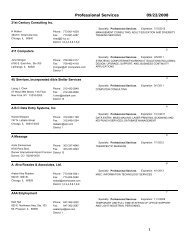Table Of Contents - Chicago Transit Authority
Table Of Contents - Chicago Transit Authority
Table Of Contents - Chicago Transit Authority
Create successful ePaper yourself
Turn your PDF publications into a flip-book with our unique Google optimized e-Paper software.
CTA Express Airport Train Service Business Plan<br />
train control, there is a limited capability to provide instruction to the express train operator on how to<br />
achieve smooth operation and overtake the local trains with a minimum of delay.<br />
Eliminating the variability of much of the train operation by upgrading to Automatic Train Operation<br />
(ATO) seems desirable from the standpoint that the central computer would now determine the optimum<br />
and safe speed profile for an express following a local train. However, ATO is not a cure-all, as there are<br />
several things that can occur in the course of an operating day that are beyond CTA’s control. Further,<br />
ATO or any major control technology upgrade would require significant additional capital investment.<br />
Equipping the entire Blue Line, 706 ordinary service AC rail cars, and 596 2600-series rail cars with ATO<br />
equipment could cost approximately $120 million (in 2006 dollars). This concern is not as significant if<br />
the Kennedy Expressway-UP alignment alternative is used, because the express and local train operations<br />
would then be largely segregated and the potential for interference between the two services is greatly<br />
reduced.<br />
Existing service restoration and maintenance practices on the portions of the express route shared with<br />
local trains may require revision prior to the inception of the Express Service. Service restoration<br />
practices (holding of trains mid-line, etc.), which are commonly employed today on the Blue, Orange, or<br />
Red Lines, may adversely affect the premium express train service. In a similar context, midday and<br />
weekend single-track/work/slow zones could also subject the Express Service trains to unacceptable<br />
delays. Where dedicated express tracks are to be provided, work on the local tracks might occur without<br />
significant impact on the express (other than the requirement to slow while passing workers on the rightof-way).<br />
Work on the express tracks could occur during the period when the premium service is not<br />
operating. As above, this concern is not as significant if the Kennedy Expressway-UP alignment<br />
alternative is used, because the express and local train operations would then be largely segregated and<br />
the potential for interference between the two services greatly reduced.<br />
A more limited means of addressing reliability and service restoration issues (using either the Blue Line<br />
elevated or Kennedy Expressway-UP alignments) would be to implement more remote control of<br />
interlockings along the express route. On a preliminary basis, implementing this system over the entire<br />
express route is estimated to cost approximately $10 million.<br />
Preliminary estimates of the staffing required at the start of the Express Service are summarized in <strong>Table</strong><br />
13.<br />
50


